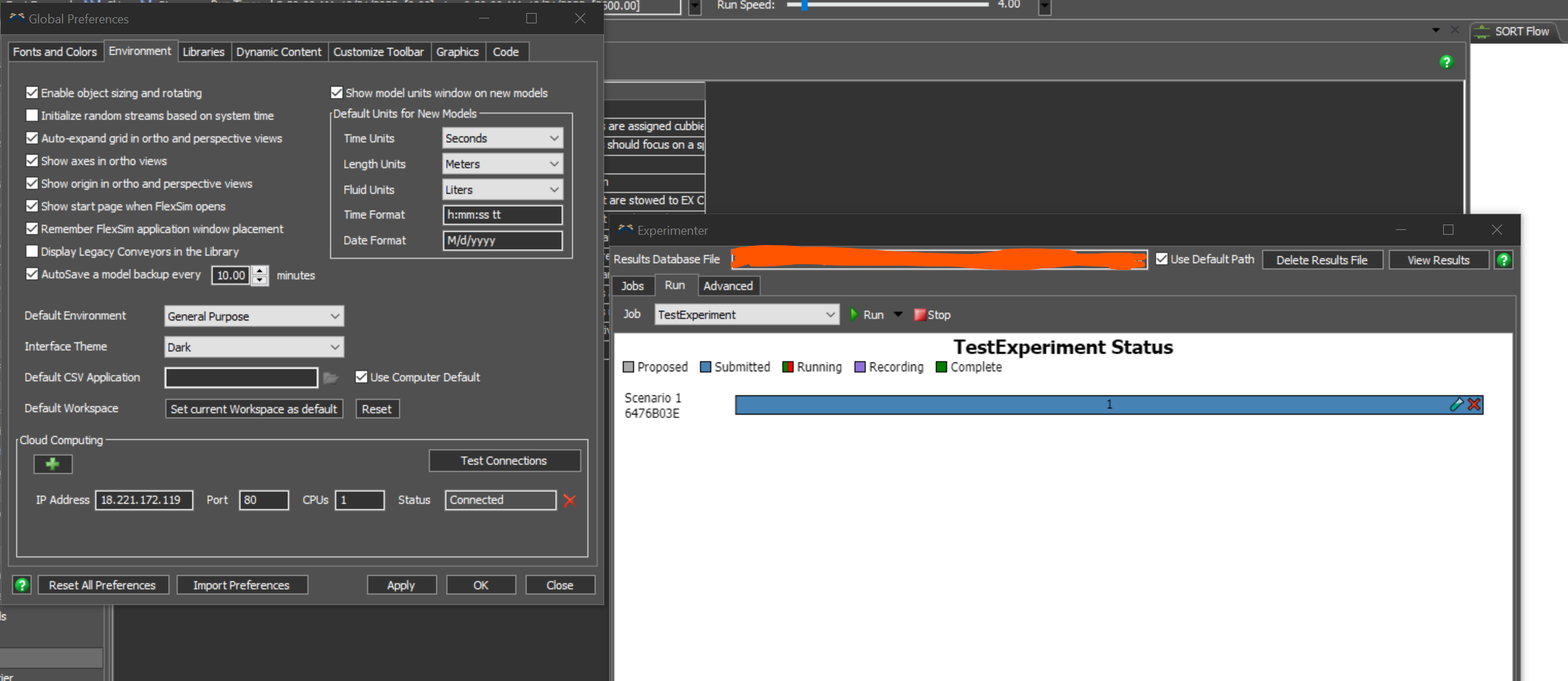After following this walk-through along with some information from this seemingly old procedure. I have ended up in a state where the experiments that I set to run on distributed cloud nodes reach the "Submitted" stage but never progress beyond that. I have allowed them to wait in that state for at most 10 minutes with no change. Do you have any ideas of what I could do to debug this?
I am using AWS with an EC2 instance that has 2vCPUs, 4GB RAM, and is running Windows Server 2022. Due to the low RAM amount, I entered "1" for the CPUs field in my local FlexSim setup in order to abide by the minimum/recommended requirements called out in Distributed experiments or optimizations.
Additionally, I seem to get this error in the System Console every few tries. Unsure if it is related.
- exception: Experimenter[IP ADDRESS] did not return valid ports
- exception: ExperimenterUnable to create child processes on cloud nodes
- exception: Experimenter Could not get jobID
- exception: FlexScript exception: MAIN:/project/library/Experimenter>behaviour/eventfunctions/assertScenario c: MODEL:/Tools/Experimenter
- exception: FlexScript exception: MAIN:/project/library/Experimenter>behaviour/eventfunctions/assertTask c: MODEL:/Tools/Experimenter
- exception: FlexScript exception: Array index out of bounds at MAIN:/project/library/Experimenter>behaviour/eventfunctions/approveTasks c: MODEL:/Tools/Experimenter
- exception: treewin__CallUserCallback
- ex: CallUserCallback



